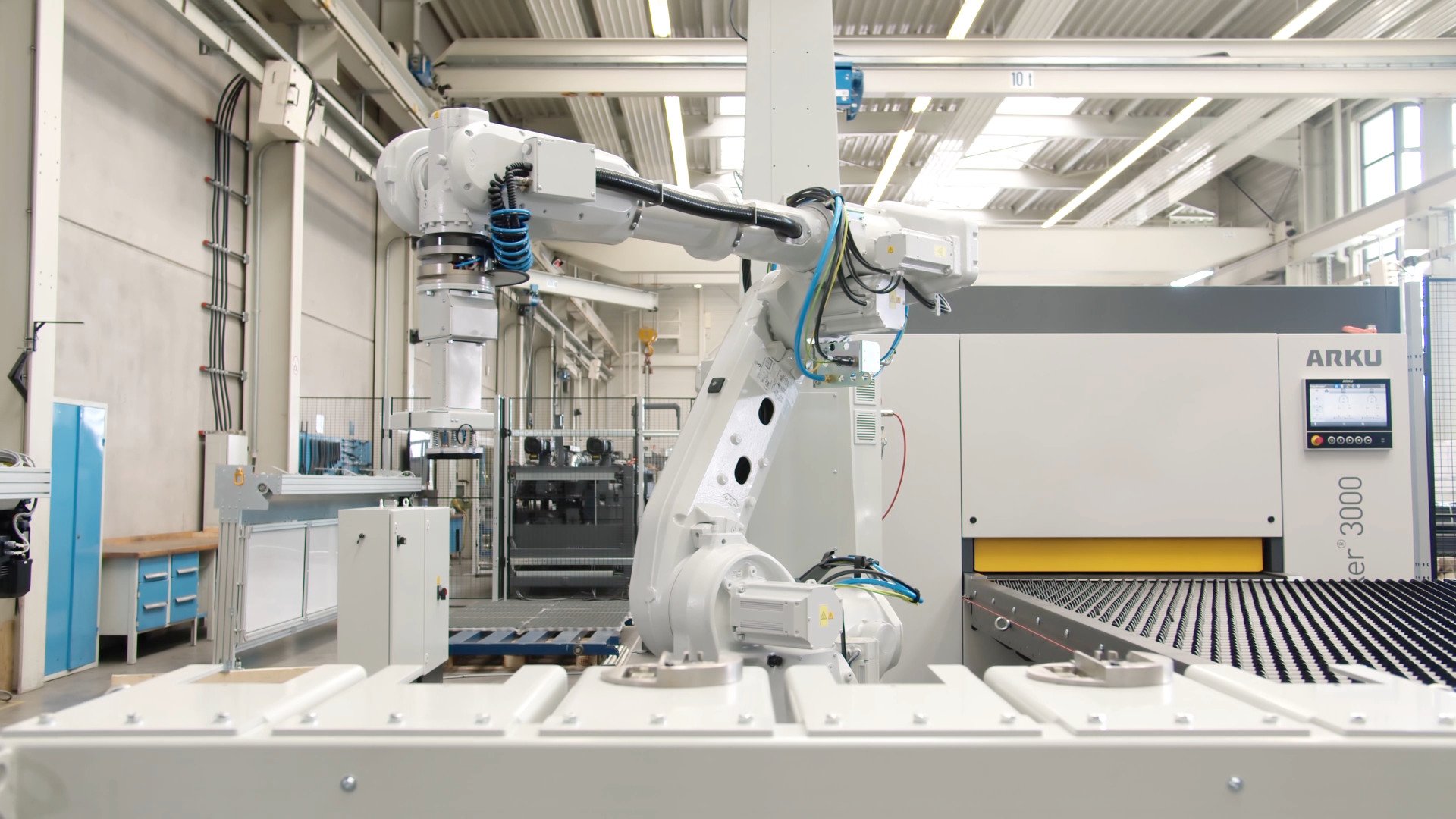

ARKU's part handling solutions: The perfect fusion of technology and robotics.
contact us
Material Handling
Increased Productivity for Deburring thanks to Robot Material Handling
Avantages
Eliminate the need for manual lifting and flipping of heavy parts
Constantly lifting and flipping sheet metal parts is not a pleasant task for most people. The physical strain is especially high when dealing with heavy sheet metal parts. However, these repetitive tasks are perfectly suited for a robot.
Small batch sizes become profitable
Nowadays, robots can autonomously perform tasks without the need for complex programming. Thanks to cameras and Artificial Intelligence, this is made possible. The robot identifies the workpieces on the pallet, selects the appropriate gripper, and precisely places the workpieces in the machine. Even the removal from the machine and placement on a pallet can be automated.
Fast, precise, and consistently accurate
The robot takes on repetitive tasks at the deburring machine that are time-consuming yet require precision and speed. It operates more efficiently, with greater process security and accuracy than a human. Automation even allows for seamless integration of machines and processes through robots.
Combatting the skills shortage
Do you need skilled employees for all tasks? By utilizing robots, you can alleviate the workload on your workforce and allocate more time to crucial tasks.
Watch Automated Part Handling for Deburring in our Video!
Thanks to our vision robot, automation on the deburring machine is a reality. Equipped with a camera and artificial intelligence, it independently recognizes the stacked parts, positions them correctly in the machine and also performs automated removal and destacking. Find out more in our video!

Quickly Deburred Sheet Metal & Heavy Plate with Robots
FAQ
ARKU Deburring Machines suitable for Robotic Parts Handling

Deburring machines for punched and laser cut parts
Explore our range of deburring machines for punched parts and laser-cut parts.

Deburring machines for plasma and oxyfuel parts
Explore our deburring machines for parts cut by autogen and plasma methods.

Deburring line for plasma parts
Discover more about our deburring line for oxyfuel and plasma cut parts, the EdgeBreaker® 9000 Line.




